The Board Of Aldermen
Alderman William J. Keegan (1896-1901)
Alderman of the 4th (1896-1897) and 7th Assembly District (1898-1901). Democrat.
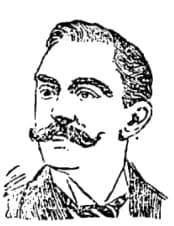
Keegan was a member of Bay Ridge’s volunteer fire department, and the local tax collector. He was unusual for an Alderman because he actually lived in Bay Ridge, on 99th street between Fourth and Fifth. Back then, Aldermen represented the same area as the local State Assemblymen… who had massive districts. It was unlikely for an Alderman to come from a less-populated area like Bay Ridge.
The 7th Assembly district, for example, included the more densely populated areas of Northern Brooklyn. This would change in 1901, and the city established smaller districts for aldermen. This gave them the hyper-local constituent-services flavor they’d retain into the City Council era.
Keegan was a relic of the past in more ways than one. Being a local Tax Collector doesn’t just happen; it’s a plum patronage position. Keegan was part of the old Brooklyn political machine, and they put him up for Alderman in 1895.
Before 1898, Brooklyn was its own city. Separate from Manhattan, it was isolated from the notorious Tammany Hall. But Brooklyn had its own political machine, run by Hugh McLaughlin. Keegan was their guy in South Brooklyn. Newspapers mentioned the Alderman as taking orders from “Willoughby Street”, McLaughlin’s headquarters.
However, in 1898, state law merged Brooklyn into New York City. Many Brooklynites called it “the great mistake”. Tammany and McLaughlin were now in direct competition for Democratic control of Brooklyn. By 1901, Alderman Keegan would lose his election, and two years later, Tammany-aligned Patrick J. McCarren (of McCarren Park fame) ousts McLaughlin himself.
Following Keegan’s loss, Bay Ridge’s politics would be dominated by the Tammany-friendly South Brooklyn Democratic machine headed by Thomas Wogan.
Alderman Keegan’s Electoral Stats (click to open)
Aldermanic Election, 4th District | Nov 5th 1895
| Candidate* | Party | Votes |
|---|---|---|
| William Keegan | Regular Democrat | 10,851 |
| William A. Doyle | Regular Democrat | 10,820 |
| John J. McGarry | Regular Democrat | 10,636 |
| Frank Hennessy | Regular Democrat | 10,682 |
| Joseph P. Reynolds | Republican | 6,494 |
| Michael J. Sims | Republican | 6,531 |
| Philip J. Connell | Republican | 6,560 |
| Theodore S. Jenkins | Republican | 6,671 |
| Michael Hanrahan | Reform Democrat | 2,996 |
| James J. Millard | Reform Democrat | 3,339 |
| Daniel O’Reilly | Reform Democrat | 3,144 |
| Michael D. Kelly | Reform Democrat | 2,610 |
| William Patterson | Prohibition | 93 |
| John Adams | Prohibition | 93 |
| Henry Ehret | Socialist Labor | 270 |
| Martin Daumberger | Socialist Labor | 275 |
| Charles Kittel | Socialist Labor | 272 |
| Albert Klein | Socialist Labor | 272 |
| Michael B. Murray | People’s Party | 24 |
Aldermanic Election, 7th District | Nov 5th 1897
| Candidate | Party | Votes |
|---|---|---|
| William Keegan (Incumbent) | Democrat* | 5,914 |
| Peter A. Hegeman | Republican | 2,660 |
| Michael B. Kelly | National Democratic** | 2,418 |
| John J. Spencer | Socialist Labor | 111 |
| John N. Jones | Prohibition | 55 |
**Kelly also ran on the Citizens Union Party ticket.
Aldermanic Election, 7th District | Nov 7th 1899
| Candidate | Party | Votes |
|---|---|---|
| William Keegan (Incumbent) | Democrat | 5,304 |
| Frederick Lundy | Republican | 4,616 |
| Stanislaus Nowak | Socialist Labor | 337 |
| Peter Casey | Prohibition | 29 |
| Patrick H. Malone | Democratic Labor | 835 |
District Map Shift! As of 1901, Bay Ridge is part of the 52nd Aldermanic District, encompassing most of Southern Brooklyn from Sheepshead Bay & Coney Island to Bay Ridge.
Alderman Frederick “Fred” Lundy (1902-1905)
Alderman of the 52nd Aldermanic District. Republican (1901) / Democrat (1903)
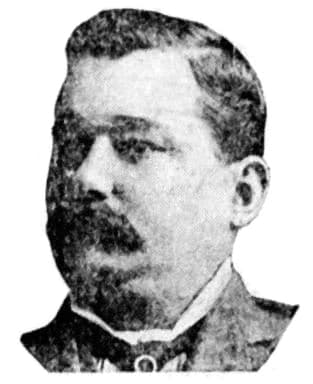
Fred Lundy, a successful South Brooklyn fishmonger, had previously faced Alderman Keegan and lost in 1897. But his chances were good post-consolidation. The new, smaller Aldermanic districts cut out much of Northern Brooklyn… and much of Keegan’s support base. Additionally, Lundy’s previous run in 1897 was hurt by the presence of competing Independence League candidates. By 1901, the league decided to ally with Lundy and the Republican party, creating a Fusion ticket.
Lundy won as a Republican at a time when the party was much more progressive than the newly-expanding Tammany-Hall aligned Democrats. However, his stint as a Republican was short-lived.
Shortly after his election, Lundy betrayed his anti-Tammany friends on the Board of Aldermen. In a bold move, he became a turncoat, and helped oust fellow Republican Herbert Parsons from the vital Finance Committee. This gave Tammany control of bond issuances, which controlled most municipal infrastructure spending. The Tammany machine rewarded Lundy by including him on the Democratic ticket in 1903.
The move served Lundy well. He would go on to become a major political player in Sheepshead Bay and Coney Island. His son would go on to establish the historic Lundy’s Restaurant on Emmons Avenue.
Alderman Lundy’s Electoral Stats (click to open)
Aldermanic Election, 52nd District | Nov 6th 1901
| Candidate | Party | Votes |
|---|---|---|
| Frederick Lundy | Republican | 3,855 |
| Berend W. Baas | Democrat | 3,102 |
| David Hoecke | Social Democracy | 31 |
| William H. Raymond | Prohibition | 23 |
| William D. Peck | Socialist Labor | 19 |
Aldermanic Election, 52nd District | Nov 3rd 1903
| Candidate | Party | Votes |
|---|---|---|
| Frederick Lundy (Incumbent) | Democrat | 4,051 |
| Edmund W. Voorhies | Republican | 2,882 |
| Thomas B. McNickle | Citizens’ Union | 766 |
| John Henry Ward | Social Democratic | 113 |
| Harry Andrews | Socialist Labor | 29 |
| Henry R. Ray | Prohibition | 18 |
Aldermanic Election, 52nd District | Nov 7th 1905
| Candidate | Party | Votes |
|---|---|---|
| Frederick Lundy (Incumbent) | Democrat | 3,429 |
| Lewis M. Potter | Republican | 3,442 |
| Wilbur E. Henderson | Municipal Ownership League | 2,723 |
| Gilbert Laird Blair | Socialist | 72 |
| Benjamin Rowe | Prohibition | 13 |
Alderman Lewis M. Potter (1905-1907)
Alderman of the 52nd Aldermanic District. Republican.
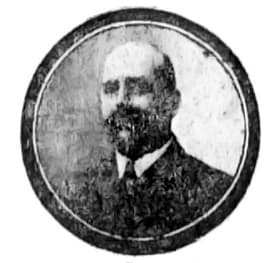
Lundy’s switch to the Democratic party was not great for his electoral chances as Alderman, however. In 1905, he was beaten by Republican Lewis M. Potter.
Potter was a business leader and former president of the Coney Island Board of Trade. But it wasn’t all business. He worked as a carpenter for a time, and then as a sergeant in Coney Islands local, autonomous police force.
Potter’s peers considered him one of the more dapper Aldermen, since he’d often appear in fancy dress. In 1909, for example, he would put a classified in the New York Times asking for the return of a 3 1/2-karat diamond. He didn’t lose it at a fancy party… he forgot it at a Coney Island subway station, the precursor to modern-day Stillwell Station.
Even as Alderman, Potter would spend time selling candy at stands he owned along the boardwalk. Eventually, he’d be known as the “Candy King of Coney Island”. He’d be so famous for candy that his three terms as Alderman would become a footnote in his obituary. He’d be the first in Coney Island to pull taffy with a machine, which was more sanitary than hand-pulled taffy. Popcorn was another passion: he’d be the first to pop kernels in full view of the public. It wasn’t merely a way of proving they were sanitary, it was entertaining as well.
Alderman Potter’s Electoral Stats (click to open)
Aldermanic Election, 52nd District | Nov 7th 1905
| Candidate | Party | Votes |
|---|---|---|
| Frederick Lundy (Incumbent) | Democrat | 3,429 |
| Lewis M. Potter | Republican | 3,442 |
| Wilbur E. Henderson | Municipal Ownership League | 2,723 |
| Gilbert Laird Blair | Socialist | 72 |
| Benjamin Rowe | Prohibition | 13 |
District Map Shift! In 1907, Bay Ridge becomes part of the 50th Aldermanic District, which includes nearly all of Sunset Park, as well as Borough Park and Dyker Heights.
Frederick “Fred” C. Linde (1908-1909)
Alderman of the 50th Aldermanic District. Republican.
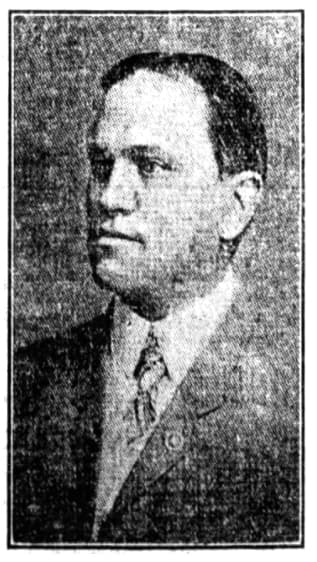
Linde was already an Alderman at the time. A 1907 redistricting moved Bay Ridge from Potter’s Coney Island district to Linde’s Sunset Park / Borough Park district. With a strong voting base and support from fellow Republican Potter, Linde easily won his election.
Linde lived by the water on 55th Street. He was part of the German and Norwegian diaspora that occupied much of northern Bay Ridge at the time, in what today we’d consider Sunset Park.
Among the notable achievements of Councilman Linde was instituting a yearly paid two-week vacation for hostlers. At the time, municipal stablemen cared for the numerous horses the city needed to conduct its business… but they never received a break, even during the slow winter months.
Alderman Linde’s Electoral Stats (click to open)
Aldermanic Election, 50th District | Nov 5th 1907
| Candidate | Party | Votes |
|---|---|---|
| Frederick C. Linde (Incumbent) | Republican* | 4,499 |
| Joseph F. Corcoran | Democrat | 3,139 |
| Jeremiah Harrigan | Independence League | 1,635 |
| Frank Lemaire | Socialist | 207 |
| Henry R. Ray | Prohibition | 36 |
Aldermanic Election, 50th District | Nov 2nd 1909
| Candidate | Party | Votes |
|---|---|---|
| Frederick C. Linde (Incumbent) | Republican* | 5,444 |
| John J. Meagher | Democrat** | 7,568 |
| Christian Carl Pederson | Prohibition | 33 |
| Gilbert L. Blair | Socialist | 169 |
**Meagher also ran on the Independent Party, Independence League, Civic Alliance, Brooklyn Subway League and Voters Federation Party ticket.
John J. Meagher (1910-1913)
Alderman of the 50th Aldermanic District. Democrat.
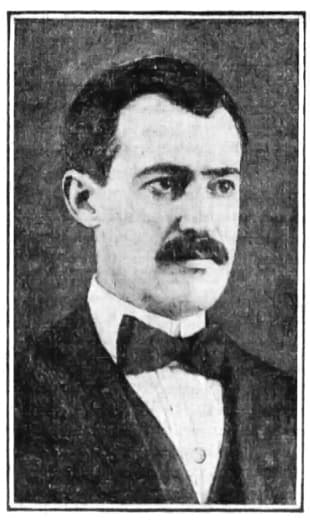
John Meagher managed to beat Alderman Linde in the 1909 elections. Conservative Democrats would remain in power for the rest of the Aldermanic Era of New York City politics… but this power was hard won. And when sheer power failed, tricks were used.
For example, Tammany Democrats liked fielding incumbents, who had a decisive advantage in elections. Because of this, Democrats would adopt a strategy of having candidates leave office mid-term. There was no such thing as a special election. Instead, the party that controlled the seat would simply appoint a new politician to step in. This allowed untested candidates to earn an incumbency advantage in most elections.
Meagher was a lawyer by trade, and an old-school Catholic from Borough Park. He would be assigned a court position at the Brooklyn Surrogates Court at the tail end of his second term. Charles Dunn, a fellow Democrat, would be assigned his Aldermanic seat by the local machine.
Alderman Meagher’s Electoral Stats (click to open)
Aldermanic Election, 50th District | Nov 2nd 1909
| Candidate | Party | Votes |
|---|---|---|
| Frederick C. Linde (Incumbent) | Republican* | 5,444 |
| John J. Meagher | Democrat** | 7,568 |
| Christian Carl Pederson | Prohibition | 33 |
| Gilbert L. Blair | Socialist | 169 |
**Meagher also ran on the Independent Party, Independence League, Civic Alliance, Brooklyn Subway League and Voters Federation Party ticket.
Aldermanic Election, 50th District | Nov 2nd 1911
| Candidate | Party | Votes |
|---|---|---|
| John J. Meagher (Incumbent) | Democrat* | 6,475 |
| James L. Fream | Republican | 6,156 |
| Gus E. Stromberg | Prohibition | 70 |
| Oscar H. Hild | Socialist | 653 |
Charles “Charlie” W. Dunn (1913)
Alderman of the 50th (Mar 1913 – Dec 1913). Democrat.
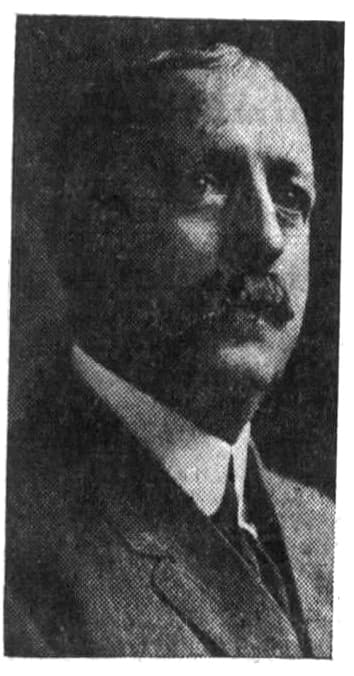
Charles Dunn, amateur baseball player and law clerk, was appointed to succeed Meagher. A loyal party machine functionary, Dunn had long served as Recording Secretary in boss Tom Wogan’s Ninth Assembly District Democratic clubhouse. He’d been the beneficiary of various patronage positions since at least 1900.
For every rule, there’s an exception. Dunn would only hold his Alderman seat for a few months, losing his first election by one and a half thousand votes… despite his incumbency. He’d be back, though.
Alderman Dunn’s Electoral Stats (click to open)
Aldermanic Appointment, 50th District | March 11th 1913
| Candidate | Party | Votes |
|---|---|---|
| Charles W. Dunn | Democrat | N/A |
Aldermanic Election, 50th District | Nov 4th 1913
| Candidate | Party | Votes |
|---|---|---|
| Charles W. Dunn (Incumbent) | Democrat | 5,769 |
| Edward B. Valentine | Republican* | 7,143 |
| Ludwig Lore | Socialist | 610 |
| Frank C. Foster | Prohibition | 64 |
| Theodore Quets | Independence League | 1,398 |
Edward B. Valentine (1914-1915)
Alderman of the 50th Aldermanic District (1914-1915). Republican.
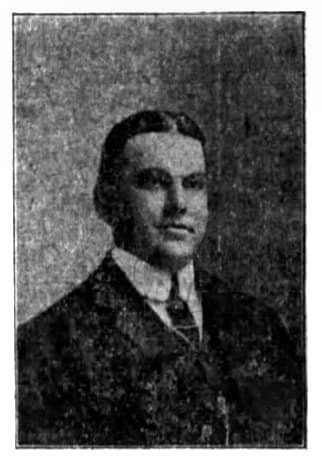
Edward Valentine was a rival of Dunn. In fact, Valentine and Dunn were neighbors, living on the same block along 52nd street… though newspapers at the time describe the rivalry as “friendly”. He manages to beat Dunn thanks to the Independence League siphoning off votes from the Democrats.
Alderman Valentine would be the last “progressive” Republican to hold office in Bay Ridge. In fact, he was endorsed (though not without controversy) by the Bull Moose party. Bull Moose, otherwise known as the National Progressive Party, represented the progressive offshoots of the Republican party after Teddy Roosevelt’s primary loss to the more conservative William Howard Taft.
By the time a Republican would return to local office in 1962, the GOP would be much changed from the “Party of Lincoln”.
Alderman Valentine’s Electoral Stats (click to open)
Aldermanic Election, 50th District | Nov 4th 1913
| Candidate | Party | Votes |
|---|---|---|
| Charles W. Dunn (Incumbent) | Democrat | 5,769 |
| Edward B. Valentine | Republican* | 7,143 |
| Ludwig Lore | Socialist | 610 |
| Frank C. Foster | Prohibition | 64 |
| Theodore Quets | Independence League | 1,398 |
Aldermanic Election, 50th District | Nov 2nd 1915
| Candidate | Party | Votes |
|---|---|---|
| Edward B. Valentine (Incumbent) | Republican* | 7,204 |
| Charles W. Dunn | Democrat** | 7,353 |
| John M. Munson | Prohibition | 241 |
| Abraham Brody | Socialist | 625 |
**Dunn also ran on the Independence League Party ticket.
Charles “Charlie” W. Dunn (1916-1929)
Alderman of the 50th (1916-1917), 44th (1918-1921) and 40th (1921-1929) Aldermanic District. Democrat.

Democratic control under Dunn would remain tenuous, as it did under Meagher. Dunn barely won his election against his former rival Edward Valentine, eking by on a mere 149 votes.
The progressive and Anti-Tammany Citizen’s Union called Dunn “valueless”. If Dunn was worried, he didn’t act like it. He would often spend his time golfing or playing baseball at country clubs outside of the district.
Dunn’s confidence would be shaken in 1919. It was the first Alderman’s race held after the state granted women the right to vote. Dunn would face off against Republican Eva Miller, the first woman to run for local office in Bay Ridge. The 19th Amendment was still another year away, but Miller would take 39 percent of the vote, an unexpectedly high number.
Newspaper reports credited Miller’s high numbers on Sunset Park’s socialist Finns and progressive Norwegians. Unsurprisingly, in 1921, Sunset Park was cut out of the district. As a result, Alderman Dunn would sail through his remaining re-election battles, winning by thousands of votes. The only challenges he’d get would be on the golf course.
Alderman Dunn’s Electoral Stats (click to open)
Aldermanic Election, 50th District | Nov 2nd 1915
| Candidate | Party | Votes |
|---|---|---|
| Edward B. Valentine (Incumbent) | Republican* | 7,204 |
| Charles W. Dunn | Democrat** | 7,353 |
| John M. Munson | Prohibition | 241 |
| Abraham Brody | Socialist | 625 |
**Dunn also ran on the Independence League Party ticket.
Aldermanic Election, 44th District | Nov 6th 1917
| Candidate | Party | Votes |
|---|---|---|
| Charles W. Dunn (Incumbent) | Democrat | 8,960 |
| Joseph P. Taylor | Republican* | 5,475 |
| Robert H. Goeller | Socialist | 1,626 |
| Frank C. Halliday | Prohibition | 109 |
Aldermanic Election, 44th District | Nov 4th 1919
| Candidate | Party | Votes |
|---|---|---|
| Charles W. Dunn (Incumbent) | Democrat | 13,731 |
| Eva Miller | Republican | 9,826 |
| Walter P. Henry | Socialist | 1,939 |
| Peter Johnston | Prohibition | 416 |
Aldermanic Election, 40th District | Nov 8th 1921
| Candidate | Party | Votes |
|---|---|---|
| Charles W. Dunn (Incumbent) | Democrat | 11,342 |
| John C. Wandell | Republican | 8,443 |
| Victor H. Lawn | Socialist | 955 |
| William F. Kirk | Farmer-Labor | 35 |
| Jens C. Aamodt | Prohibition | 67 |
Aldermanic Election, 40th District | Nov 6th 1923
| Candidate | Party | Votes |
|---|---|---|
| Charles W. Dunn (Incumbent) | Democrat | 10,836 |
| James T. Carroll | Republican | 8,733 |
| Frank Smith | Socialist | 294 |
Aldermanic Election, 40th District | Nov 3rd 1925
| Candidate | Party | Votes* |
|---|---|---|
| Charles W. Dunn (Incumbent) | Democrat | 16,536 |
| Elbridge F. Hills | Republican | 10,333 |
| Fannie Schainbloom | Socialist | 627 |
Aldermanic Election, 40th District | Nov 8th 1927
| Candidate | Party | Votes |
|---|---|---|
| Charles W. Dunn (Incumbent) | Democrat | 17,380 |
| Sigurd J. Arnesen | Republican | 11,423 |
| Charles Kanowitz | Socialist | 939 |
Lots of District Map Shifts! In 1917, Bay Ridge’s Aldermanic district is renamed from the 50th to the 44th. There are no changes in boundaries. In 1921, Sunset Park is removed from the district and it is renamed the 40th Aldermanic district. The district will remain stable in this configuration until the late 1930’s.
Richard “Dick” J. Tonry (April-Jun 1929)
Illegally Appointed Alderman of the 40th Aldermanic District. Democrat.
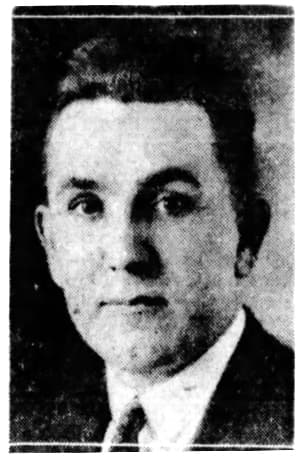
Every year, the local Democratic Machine headed by Thomas Wogan would host lengthy vacation excursions up the Hudson. Alderman Dunn, an avid sportsman, rarely missed them. However, in 1927 while motoring around Bear Mountain, Dunn and others were involved in a brutal car crash. Dunn suffered head trauma, and two years later had not fully recovered, often being ill for months at time. In 1929, he died of lingering wounds. His funeral outside Our Lady of Angels was attended by throngs of mourners.
Fellow Wogan-aligned Democrat Dick Tonry was appointed to fill his seat. But it wouldn’t be a smooth appointment. Ever vigilant, the Anti-Tammany Citizens Union discovered a mistake in the appointment… a big one. Tonry was already a State Assemblyman. Even worse, he had failed to step down. Thus, Tonry’s appointment was illegal. Sitting elected officials, such as State Assemblymen, could not hold a second position (or, critically, a second paycheck).
The courts agreed, and Tonry was forced to resign his seat on July 9th, serving only 78 days in office.
Alderman Tonry’s Electoral Stats (click to open)
Aldermanic Appointment, 40th District | Apr 23rd 1929
| Candidate | Party | Votes |
|---|---|---|
| Richard J. Tonry | Democrat | N/A |
Felix J. McCarthy (1929)
Appointed Alderman of the 40th Aldermanic District. Democrat.
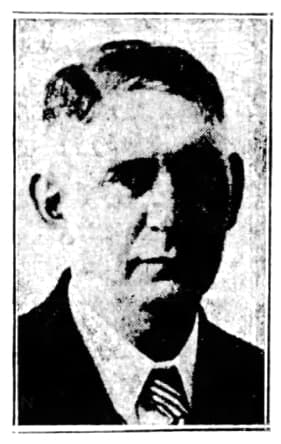
While Tonry’s appointment was illegal, the Wogan-aligned Democratic machine still controlled the appointments by law. They selected former police patrolman and loyal party functionary Felix McCarthy to briefly replace Tonry.
Undeterred, the party put forward Tonry’s name, not Felix’s, for the November elections. If they couldn’t appoint him, they’d get him elected instead.
Alderman McCarthy’s Electoral Stats (click to open)
Aldermanic Appointment, 40th District | Jul 9th 1929
| Candidate | Party | Votes |
|---|---|---|
| Felix J. McCarthy | Democrat | N/A |
Richard “Dick” J. Tonry (1929-1934)
Alderman of the 40th Aldermanic District. Democrat.

Richard Tonry easily won his election, and returned to the Aldermanic seat he briefly held the year before. However, he’d resign his Council seat part-way into his term, in order to (successfully) run for Congress.
Unbeknownst to him, he’d be the last Demoratic Alderman aligned to the local Democratic machine boss, Thomas Wogan. A big shakeup was about to occur.
Alderman Tonry’s Electoral Stats (click to open)
Aldermanic Election, 40th District | Nov 5th 1929
| Candidate | Party | Votes |
|---|---|---|
| Richard J. Tonry | Democrat | 24,839 |
| John J. McPartland | Republican | 13,887 |
| Carl Cummings | Socialist | 1,736 |
Aldermanic Election, 40th District | Nov 3rd 1931
| Candidate | Party | Votes |
|---|---|---|
| Richard J. Tonry (Incumbent) | Democrat | 21,478 |
| Joseph F. Keating | Republican | 8,613 |
| Robert L. Bobrick | Socialist | 3,404 |
Aldermanic Election, 40th District | Nov 7th 1933
| Candidate | Party | Votes |
|---|---|---|
| Richard J. Tonry (Incumbent) | Democrat* | 32,570 |
| Christian Andersen | Republican** | 31,720 |
| Sol Sholes | Socialist | 2,043 |
| Max Schnapp | Communist | 676 |
**Andersen also ran on the City Fusion Party ticket.
Donald L. O’Toole (1935-1937)
Alderman of the 40th Aldermanic District. Democrat.
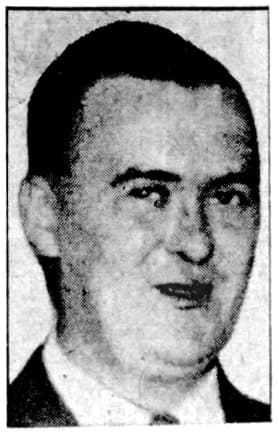
Congressman O’Toole landed in office at a pivotal moment in local politics. He was fresh off managing the campaign of Thomas J. McGee, who had just been elected the Democratic District Leader. This was no small thing. His opponent was long-time machine boss Thomas F. Wogan himself, who now found himself deposed from his own machine. McGee quickly moved to install people loyal to him.
McGee was now in control of appointments for vacant positions…. and he’d have a chance to use that power immediately. Richard Tonry had just abandoned his alderman seat in that same election in order to (successfully) run for Congress. That meant there was a free, unelected appointment up for grabs on the Board of Alderman. McGee tapped his loyal campaign manager O’Toole for the spot.
O’Toole would later resign his Alderman post in the same way Tonry had: to run for Congress. However, it was a strategic move. O’Toole primaried Tonry for his Congressional seat, and won. With that, the last Wogan-aligned Democrat was expelled from office. O’Toole would move on to Congress, and the Wogan machine would never recover.
Alderman O’Toole’s Electoral Stats (click to open)
Aldermanic Appointment, 40th District | Jan 4th 1935
| Candidate | Party | Votes |
|---|---|---|
| Donald L. O’Toole | Democrat | N/A |
Aldermanic Election, 40th District | Nov 5th 1935
| Candidate | Party | Votes |
|---|---|---|
| Donald L. O’Toole (Incumbent) | Democrat | 34,579 |
| Alfred J. Giordano | Republican* | 16,116 |
| George Field | Socialist | 1,737 |
| Louis A. De Santis | Communist | 1,038 |
Harry M. Mortimer (1937)
Alderman of the 40th Aldermanic District. Democrat.
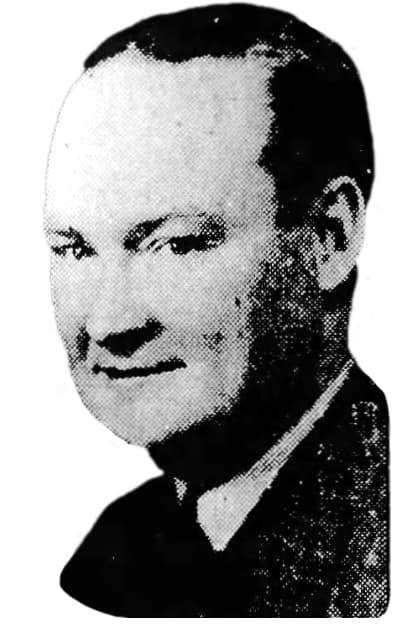
Harry Mortimer was appointed to take over from Alderman O’Toole in January of 1937. Mortimer was a fellow member of the Democratic faction headed by Thomas McGee, and a local car salesman.
Harry ended up being the last Alderman of Bay Ridge, as a Charter revision abolished the Board of Aldermen on January 1st 1938. He’d join Felix McCarthy as the only two politicians to represent Bay Ridge without ever appearing on a ballot.
Alderman Mortimer’s Electoral Stats (click to open)
Aldermanic Appointment, 40th District | Dec 22nd 1936
| Candidate | Party | Votes |
|---|---|---|
| Harry M. Mortimer | Democrat | N/A |
The City Council’s Proportional Era
At this point, a bold experiement begins in local governance. With the abolition of the Board of Aldermen, the City Council is formed. However, it is different than how we know it today.
It is formed based on a Proportional Vote. This means that there are no districts, only borough-wide elections. Multiple parties put forth multiple candidates, which can be voted on by everyone across a borough. For every 75000 votes within a borough, an additional seat on the council is created for that borough. If a candidate recieves more than 75,000 votes, they are maxed out, and further votes toward them get distributed to second and third choice candidates via. the Hare Quota. After all the votes are tallied, each borough’s seats are filled based on who got the most votes, going down the list until the seats are filled.
In the first election in November of 1937, Brooklyn had 699,191 votes. That earned it nine slots, which were filled by five Democrats, two Laborites, one Fusionite, and one Republican. The number of seats would vary widely, since the number of seats relied entirely on each election’s overall turnout.
In this system, districts weren’t really a thing, and all of the elected candidates were responsible for the borough, including Bay Ridge. As a result, no City Councilmen came from Bay Ridge during this era. Instead, we’ve decided to list the Councilmen who lived closest to the neighborhood. They were the only South-West Brooklyn City Councilmen elected… but they both have amazing stories.
Louis Hollander (1938-1940)
City Councilmember for Brooklyn, American Labor Party
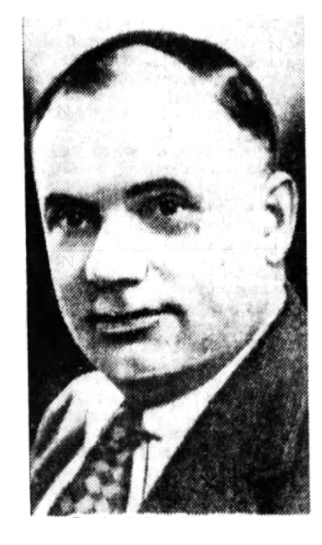
Most people don’t associate Louis Hollander, a reknowned labor activist, with Bay Ridge. But he was our Councilman, and is reported in news articles to have spoken at numerous Bay Ridge events. In addition to Labor organizing, his focus seemed to be on Southern and Southwestern Brooklyn. At the time, he was the Kings County Chairman of the American Labor Party, and would go on to become the head of the New York State CIO.
Census records show Hollander living in Bensonhurst on 79th St, and would have been the closest Councilmen elected in the 1938 race. The next closest would have been his fellow American Labor Party member Andrew R. Armstrong in Kensington, or Democrat Albert D. Schanzer in Midwood.
Councilmember Hollander’s Electoral Stats (click to open)
City Council Election, Brooklyn At-Large | Nov 2nd 1937
| Candidate | Party | Votes* |
|---|---|---|
| Louis Hollander | Democrat | 75,000 (max) |
| William M. McCarthy | American Labor | 71,926 |
| Andrew R. Armstrong | American Labor | 62,357 |
| Genevieve B. Earle | City Fusion | 60,418 |
| Albert D. Schanzer | Democrat | 54,099 |
| John Cashmore | Democrat | 50,131 |
| A. J. DiGiovanna | Democrat | 47,661 |
| Joseph T. Sharkey | Democrat | 44,682 |
| Abner C. Surpless | Republican | 41,412 |
| Peter V. Cacchione | Communist | 41,063 |
| Louis J. Gribetz | Democrat | 36,781 |
Peter V. Cacchione (1942-1947)
City Councilman for Brooklyn, Communist Party
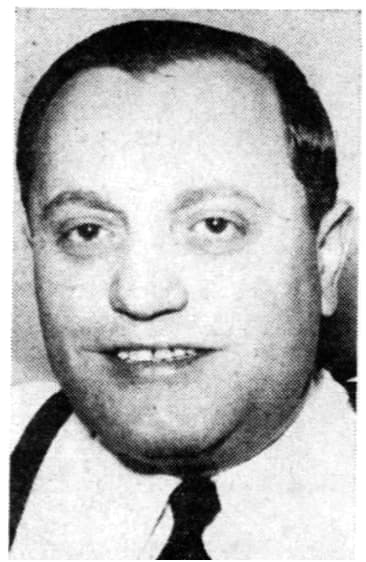
Councilman Cacchione deserves an article all to himself. In fact, there’s a great book about Pete by Si Gerson, head honcho of the Communist Party in the 20th century.
Cacchione was the first Communist to hold a major elected office anywhere in the United States, and his time in office overlapped with the beginnings of McCarthyism. By the end of his tenure, he’d become the most popular borough-wide Councilman in Brooklyn, consistently taking the plurality of votes. He’d be a thorn in the side of the establishment, and enjoy every minute of it.
An Italian-American born in Syracuse and raised in Pennsylvania, he was many things. He was a World War 1 veteran. A former hobo. A railroad engineer. He lived in flophouses, on boxcars, and finally, Bensonhurst. His home was close to the water, on Bay 31st Street just off of Benson Avenue. That made him the councilman who lived closest to Bay Ridge during this period, and the only one who lived this far south.
Cacchione died in office of a heart attack at the age of 44. At the time, he was working on forcing the City Council to investigate police brutality in Harlem. Among his other accomplishments was successfully resisting fare increases on public transit, taking the Department of Education to task for distributing racist literature to students, and much more.
Councilmember Cacchione’s Electoral Stats (click to open)
City Council Election, Brooklyn At-Large | Nov 2nd 1937
| Candidate | Party | Votes* |
|---|---|---|
| Louis Hollander | Democrat | 75,000 (max) |
| William M. McCarthy | American Labor | 75,000 (max) |
| Andrew R. Armstrong | American Labor | 63,971 |
| Albert D. Schanzer | Democrat | 63,415 |
| Genevieve B. Earle | City Fusion | 61,729 |
| John Cashmore | Democrat | 51,484 |
| Anthony J. DiGiovanna | Democrat | 49,862 |
| Joseph T. Sharkey | Democrat | 46,820 |
| Abner C. Surpless | Republican | 41,931 |
| Peter V. Cacchione | Communist | 41,564 |
City Council Election, Brooklyn At-Large | Nov 7th 1939
| Candidate | Party | Votes* |
|---|---|---|
| John Cashmore (Incumbent) | Democrat | 56,884 |
| Anthony J. DiGiovanna (Incumbent) | Democrat | 55,932 |
| Walter R. Hart | Democrat | 53,626 |
| Joseph T. Sharkey (Incumbent) | Democrat | 51,161 |
| Genevieve B. Earle (Incumbent) | City Fusion | 47,249 |
| William M. McCarthy (Incumbent) | Democrat | 45,178 |
| Abner C. Surpless (Incumbent) | Republican | 44,910 |
| Frank A. Nolan | Democrat | 36,016 |
| Harry W. Laidler | American Labor | 34,167 |
| Andrew R. Armstrong (Incumbent) | American Labor | 31,106 |
| Joseph Belsky | American Labor | 30,939 |
| Peter V. Cacchione | Communist | 24,677 |
City Council Special Election, Brooklyn At-Large | Nov 5th 1940
| Candidate | Party | Votes |
|---|---|---|
| Edward Vogel (Incumbent*) | Democrat | 619,000 |
| Peter C. Giambalvo | Republican | 327,078 |
| Joseph Tuvim | American Labor | 118,801 |
| Peter V. Cacchione | Communist | 22,464 |
City Council Election, Brooklyn At-Large | Nov 4th 1941
| Candidate | Party | Votes* |
|---|---|---|
| Genevieve B. Earle (Incumbent) | City Fusion* | 75,000 (Max) |
| Joseph T. Sharkey (Incumbent) | Democrat | 75,000 (Max) |
| Edward Vogel (Incumbent) | Democrat | 71,355 |
| Walter R. Hart (Incumbent) | Democrat | 70,022 |
| Anthony J. DiGiovanna (Incumbent) | Democrat | 60,926 |
| Rita Casey | Democrat | 59,412 |
| William M. McCarthy (Incumbent) | Democrat | 57,143 |
| Louis P. Goldberg | American Labor | 50,726 |
| Peter V. Cacchione | Communist | 48,536 |
| Murray Rosof | Republican | 45,901 |
**Earle also ran on the Citizens Non-Partisan Committee ticket.
City Council Election, Brooklyn At-Large | Nov 2nd 1943
| Candidate | Party | Votes* |
|---|---|---|
| Peter V. Cacchione (Incumbent) | Communist | 53,545 |
| Joseph T. Sharkey (Incumbent) | Democrat | 45,696 |
| Walter R. Hart (Incumbent) | Democrat | 39,534 |
| Genevieve B. Earle (Incumbent) | Republican** | 39,215 |
| Anthony J. DiGiovanna (Incumbent) | Democrat | 30,929 |
| Edward Vogel (Incumbent) | Democrat | 30,767 |
| Rita Casey (Incumbent)*** | Democrat | 29,184 |
| William M. McCarthy (Incumbent) | Democrat | 28,405 |
**Earle also ran on the Citizens Non-Partisan Committee ticket.
***Casey was eliminated in an early unofficial count, but subsequent canvassing puts her, not McCarthy, as the final candidate to be eliminated.
City Council Election, Brooklyn At-Large | Nov 6th 1945
| Candidate | Party | Votes* |
|---|---|---|
| Peter V. Cacchione (Incumbent) | Communist | 66,496 |
| Joseph T. Sharkey (Incumbent) | Democrat | 55,590 |
| Anthony J. DiGiovanna (Incumbent) | Democrat | 41,931 |
| Walter R. Hart (Incumbent) | Democrat | 41,385 |
| Edward Vogel (Incumbent) | Democrat | 39,998 |
| Genevieve B. Earle (Incumbent) | Republican | 39,862 |
| William M. McCarthy | Democrat | 33,687 |
| Louis P. Goldberg | Liberal | 32,671 |
| Maurice Bernhardt | Liberal | 30,988 |
The City Council’s District Era
The presence of Communist Party City Councilmen freaked out the city government. Partially in response, they abandoned the Proportional Vote system, and returned to something closer to the Aldermanic system. Districts would return, with a single Councilperson elected by the people of that district.
District Map Shift! With the abolition of the Proportional Representation System, the new Councilmanic districts would align to the existing State Senate districts. Bay Ridge would fall into the 14th State Senate district, which included Bensonhurst, Borough Park, and southern Dyker Heights.
Abraham “Abe” Sussman (1950-1953)
First Councilman for the 14th Senatorial District. Democrat.
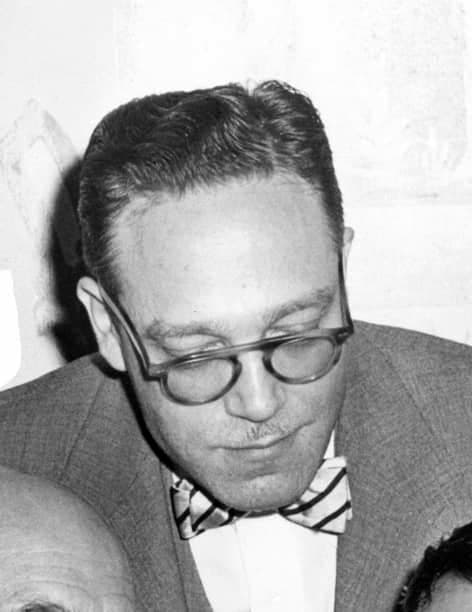
The next two Councilmen to represent Bay Ridge would both come from the heavily Democratic Borough Park political clubs. Democrats would dominate the increasingly conservative-leaning Bay Ridge thanks to the Borough Park vote, which remained steadfastly Democratic.
Abraham Sussman, and his successor Philip J. Schupler, were both members of the Victory Democratic Club. Victory was a Borough Park affiliate of the old McGee-led Democratic faction that had installed Aldermen O’Toole and Mortimer.
Sussman was a graduate of Brooklyn Law School and longtime president of the club. Then-Assemblyman Schupler had personally groomed Sussman for the Council Seat, according to the Brooklyn Daily Eagle.
Sussman’s election would emphasize the growing importance of third-party tickets in Bay Ridge elections. The Liberal party had been working on an alliance with the GOP, but negotiations fell through in a bad way. As a result, the Liberal party allowed Sussman to run on their ticket, resulting in overwhelming victory margins.
When the Liberal Party alliance ended in the late 50s, the races would be much more competitive, with the Liberal candidate siphoning numerous votes away from Democrats. This would ensure Republican control of the district throughout the 1960s and 70s.
Today, party lines such as the Working Families and Conservative Party form key voting blocs that operate in a similar way. If angered, they can run their own candidate, siphoning votes… or even primary establishment candidates, as Marty Golden would end up doing with Conservative Party backing in the 90s.
Councilmember Sussman’s Electoral Stats (click to open)
City Council Election, 14th District | Nov 8th 1949
| Candidate | Party | Votes |
|---|---|---|
| Abraham Sussman | Democratic* | 59,240 |
| Luigi R. Marano | Republican | 27,375 |
| Ralph Shapiro | American Labor | 7,275 |
Dr. Philip “Phil” J. Schupler (1954-1957)
Councilman for the 14th Senatorial District. Democrat.
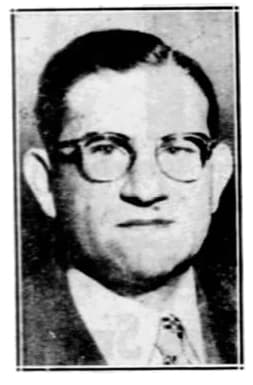
A Controversial Assemblyman
Dr. Schupler was a former high-school teacher and progressive Borough Park Assemblyman.
As Assemblyman and Minority Leader, he led the charge to repeal the unconstitutional Feinberg Anti-Communist law, which expelled “subversive” educators from the public school system. He also pushed for home-rule on rent control and evictions, reducing the minimum voting age to eighteen, and more.
But Schupler stepped on many toes in Albany. He’d go after fellow politicians for corruption, introducing bills to kick them out of office if they failed to testify in anti-corruption investigations. He’d champion reform in the notoriously obstinate Brooklyn County Committee. It earned him few friends, and in a Republican-controlled Assembly, few legislative achievements.
By July 1953, Schupler decided to dump fellow Borough Park club member Abraham Sussman from the City Council ticket, declaring he’d run for the position himself. Sussman had been endorsing rivals and opponents of Schupler for some time, including Robert Wagner for Mayor.
Even though Sussman bowed out, Schupler faced a bitter primary battle. Numerous candidates dipped their toes in the water, including former Alderman Harry Mortimer.
By the end of the primary, Schupler was badly bruised, with his rivals playing up racial divisions against Italian-Americans (and then-mayor Vincent Impellitteri, who Schupler publicly supported). Tammany-aligned Mayoral candidate Robert Wagner Jr. swept the general, and won handily in Bay Ridge… but Schupler managed to hold on, and won against Republican William Conklin in the general election by a wide margin.
The Fracturing of the Victory Democratic Club
Dr. Schupler’s term would quickly result in more controversy and drama. His primary victory had dealt lasting damage. Bad blood over the selection of his successor in the Assembly didn’t help things. His fellow members of the Victory Democratic Club called for his resignation as District Leader, calling him a “petty dictator”. He was accused of cooking the books of the clubs finances, lying on a $100 loan application, transferring “unknown sums” of money, selling his house fraudulently, and more.
Former club members who had loaned the Victory Democratic club money called on Schupler to repay them personally. They took him to court, sending Schupler into bankruptcy. By December, members of his own club had put a restraining order on him, effectively barring him from holding meetings.
Despite the hardships, he’d enter the City Council swinging. But his proposals met the same reception in City Hall as they had in Albany, and he gained few friends. Charges and indictments against him would continue. He would decide not to run for re-election.
Final Days
By December of 1957, as he was preparing to leave office, Dr. Schupler would be hit with a six-count grand larceny indictment. He was accused of accepting $6,500 from a local grocer, in exchange for getting the man’s son into Medical School. Schupler was forced to pawn his wife’s coat, and lacked the money to pay his lawyer. It was the last straw.
Dr. Schupler died of a sleeping pill overdose on May 2nd, 1958, two months after leaving office. His suicide note directly named City Council Majority Leader Joseph T. Sharkey, District Attorney Edward Silver and fellow club members as the ones who “framed me and double-crossed me”.
After his death, the District Attorney, angry at the accusations in the suicide note, released audio recordings of Schupler reportedly proving his guilt. The recordings were made by two unnamed men who had approached Dr. Schupler with concealed recording equipment.
A few weeks later, the charges would be dropped.
Dr. Schupler’s wife and two children would be left with $2,000 in life insurance and three mortgages. But Betty Schupler wouldn’t take it sitting down. She made a failed attempt at revenge, primarying one of her husbands tormentors for State Assembly. She lost, took nearly 20% of the vote with her.
Councilmember Schupler’s Electoral Stats (click to open)
City Council Election, 14th District | Nov 3rd 1953
| Candidate | Party | Votes |
|---|---|---|
| Philip J. Schupler | Democratic* | 49,107 |
| William T. Conklin | Republican | 30,772 |
| Jean Militean | American Labor | 1,892 |
District Map Shift! The City Council districts are separated from the State Senate districts for the November 1957 Election. Bay Ridge is incorporated into the new 14th Councilmanic District, which is starting to look very similar to today’s Council district. Cutting out the liberal Jewish vote in Borough Park, it instead includes Dyker Heights and parts of Bensonhurst and Bath Beach.
George H. Hearn (1958-61)
Councilman for the 14th Councilmanic District. Democrat.
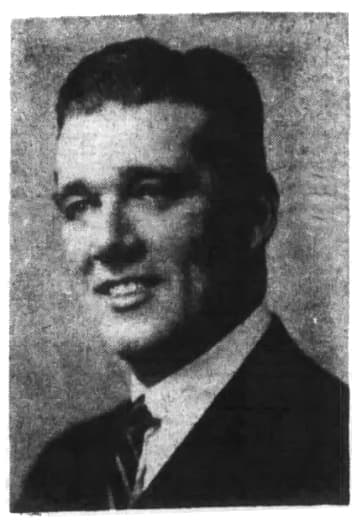
Councilman Hearn would be the first Councilmember to both represent and live within Bay Ridge. He was a youthful and charismatic young man. So youthful and charismatic, in fact, that he would be quickly snatched up by the Kennedy Administration for membership on the Civil Aeronautics Board. He’d resign his Council position in early 1961.
Hearn would later join the Federal Maritime Commission in the Johnson administration, rising to Vice-Chair. Now and then, his name would be whispered by columnists as a possible Mayoral candidate. He’d retire back to New York City in the mid-70’s to practice Maritime Law.
Councilmember Hearn’s Electoral Stats (click to open)
City Council Election, 14th District | Nov 5th 1957
| Candidate | Party | Votes |
|---|---|---|
| George H. Hearn | Democrat | 40,474 |
| Robert F. Kelly | Republican | 35,105 |
| Albert Torriani | Liberal | 4,739 |
Travers E. Devlin (1961)
Councilman for the 14th Councilmanic District. Democrat.
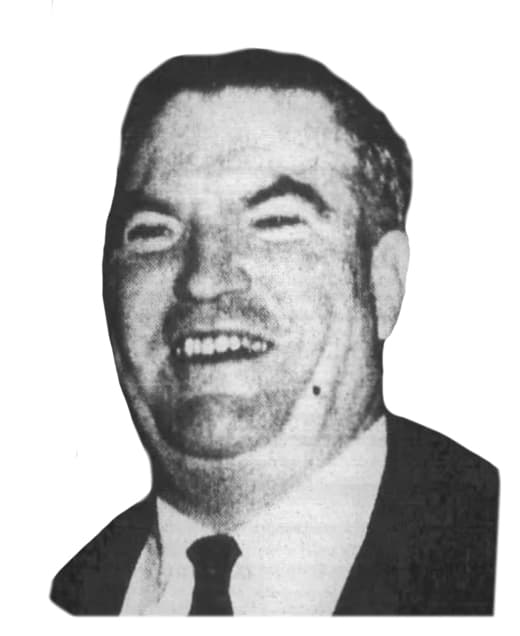
Newspapers describe Councilman Devlin as a strange choice to succeed Councilman Hearn. He seemed to be everything that Hearn was not. There were murmurs of discontent within the local Democratic party clubhouses, and perhaps the nay-sayers were right. Devlin would serve for only a few months, losing in his first and only election to Republican Angelo Arculeo.
Councilmember Devlin’s Electoral Stats (click to open)
City Council Appointment, 14th District | Apr 27 1961
| Candidate | Party | Votes |
|---|---|---|
| Travers E. Devlin | Democrat | N/A |
City Council Election, 14th District | Nov 7th 1961
| Candidate | Party | Votes |
|---|---|---|
| Travers E. Devlin (Incumbent) | Democrat | 35,266 |
| Angelo J. Arculeo | Republican | 42,505 |
| David J. Friedman | Liberal | 5,157 |
Angelo “Angie” J. Arculeo (1962-1982)
Councilman for the 14th Councilmanic District (1962-1965), 22nd Councilmanic District (1966-1973), and 31st Councilmanic District (1974-1982). Republican.
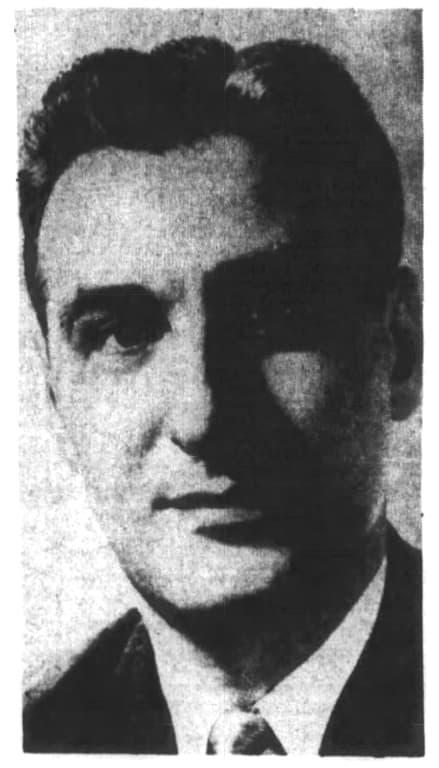
Arculeo would end up being the first “modern” (i.e. conservative) Republican Councilman to represent Bay Ridge. He’d hold the position for two decades; there were no term limits. He is likely to remain the longest-serving Councilman to represent Bay Ridge.
Despite serving for nearly two decades, he is second when it comes to number of elections won. Alderman Dunn won seven elections versus Councilmember Arculeo’s six.
For many who grew up in this era, Arculeo is “the” Bay Ridge councilman. He oversaw the neighborhood during the “bad old days” of the 60’s and 70’s. Much of the neighborhood as we know it today was defined during his tenure, especially when it comes to land use.
The opening of the Verrazzano Bridge and the eviction of many Bay Ridge Residents happened during Arculeo’s term. There was also a move to build new housing in the neighborhood, starting with the Bay Ridge Towers in 1972. Backlash against the increased density led to the first hyper-local “Special Zoning District” in the 1978. This zoning district effectively capped development in Bay Ridge and has remained the primary means of restricting new housing stock to this day, though some height restrictions have been eased.
Councilmember Arculeo’s Electoral Stats (click to open)
City Council Election, 14th District | Nov 7th 1961
| Candidate | Party | Votes |
|---|---|---|
| Travers E. Devlin (Incumbent) | Democrat | 35,266 |
| Angelo J. Arculeo | Republican | 42,505 |
| David J. Friedman | Liberal | 5,157 |
City Council Election, 22nd District | Nov 5th 1965
| Candidate | Party | Votes |
|---|---|---|
| Angelo J. Arculeo (Incumbent) | Republican | 43,194 |
| Joseph F. Seminara | Democrat | 27,586 |
| Mauro Magnani | Conservative | 9,161 |
| Albert Torriani | Liberal | 2,953 |
City Council Election, 22nd District | Nov 4th 1969
| Candidate | Party | Votes |
|---|---|---|
| Angelo J. Arculeo (Incumbent) | Republican* | 35,200 |
| Robert F. Walsh | Democrat | 28,068 |
| Raymond C. Granda | Liberal | 6,913 |
City Council Election, 31st District | Nov 6th 1973
| Candidate | Party | Votes |
|---|---|---|
| Angelo J. Arculeo (Incumbent) | Republican* | 22,886 |
| Joseph N. Sciarra | Democrat** | 18,207 |
| Raymond C. Grana | Liberal | 830 |
**Sciarra also ran on the Senior Citizens Party ticket.
City Council Election, 31st District | Nov 5th 1974
| Candidate | Party | Votes* |
|---|---|---|
| Angelo J. Arculeo (Incumbent) | Republican** | 31,752 |
| Frederick J. Trippe | Democrat | 21,324 |
| Neil J. Wittlin | Liberal | 1,002 |
**Arculeo also ran on the Conservative Party ticket.
City Council Election, 31st District | Nov 8th 1977
| Candidate | Party | Votes |
|---|---|---|
| Angelo J. Arculeo (Incumbent) | Republican* | 20,696 |
| Ralph J. Perfetto | Democrat | 13,986 |
| Raymond C. Grana | Liberal | 3,661 |
City Council Election, 31st District | Nov 2nd 1982
| Candidate | Party | Votes* |
|---|---|---|
| Angelo J. Arculeo (Incumbent) | Republican** | 20,867 |
| Salvatore F. Albanese | Democrat*** | 22,100 |
**Arculeo also ran on the Conservative Party and Right To Life Party tickets.
***Albanese also ran on the Liberal Party ticket.
Joseph F. Ruggieri (1964-1969)
Councilman-At-Large for Brooklyn. Democrat.
For 1964, the City Council was expanded by ten seats, which were to be filled by two “at-large” candidates from each Borough. One of the two candidates who won the most votes in Brooklyn was a Bay Ridge local, Joseph F. Ruggieri, who lived on Colonial Road at the time. He was the father of then-mayor Wagner’s legislative representative.
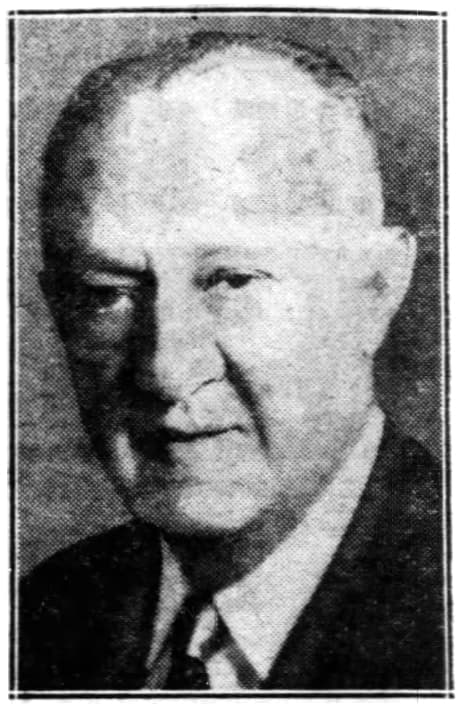
He’d serve simultaneously with Councilman Arculeo, in a rare moment where Bay Ridge had two Councilmembers… both of whom were from different political parties.
Councilmember-At-Large Ruggieri’s Electoral Stats (click to open)
City Council Election, Brooklyn At-Large | Nov 5th 1963
| Candidate* | Party | Votes |
|---|---|---|
| Joseph F. Ruggieri | Democrat | 269,202 |
| Harry J. Donnelly | Republican | 127,765 |
| Aaron Nussbaum | Liberal | 73,398 |
| Vito Battista | Conservative | 37,126 |
| Clifton De Berry | Socialist Workers | 3,291 |
City Council Election, Brooklyn At-Large | Nov 2nd 1965
| Candidate* | Party | Votes |
|---|---|---|
| Joseph F. Ruggieri (Incumbent) | Democrat | 283,203 |
| Harry J. Donnelly (Incumbent) | Republican | 167,193 |
| Arnold Seltzer | Liberal | 64,039 |
| William C. Balfour, Jr. | Conservative | 50,516 |
District Map Shift! Bay Ridge becomes part of the Twenty-Second Councilmanic District in November 1965 election. Starting in 1974, it is considered part of the 31st Council District.
Salvatore “Sal” F. Albanese (1983-1997)
Councilman for the 31st Councilmanic District (1983-1991), and 43rd Councilmanic District (1992-1997). Democrat.
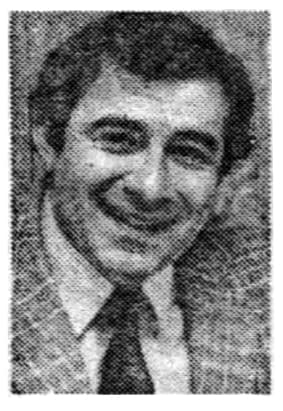
Looking back, many chalked up Arculeo’s loss to being “tired” after nearly two decades in office. But the 1982 election was hard-fought, and nobody fought harder than Sunset Park District Leader Sal Albanese.
Albanese had likely been putting polls into the field as early as 1981. The Daily News reported that pollsters masquerading as representatives from the Newspaper had been asking about an Acruleo/Albanese matchup in December of that year… before Albanese’s candidacy was blessed by the local Democratic organizations. He was running against headwinds, facing a difficult primary battle, and newspapers did not give “much of a chance” to Albanese in the general election.
But something worried Arculeo. Mario Cuomo (Andrew Cuomo’s father) was at the top of the ticket, running as the first Italian-American Governor of New York… and Cuomo dominated among the heavily Italian voting block that Arculeo needed. Arculeo was so worried, the Daily News reported, that he skipped out on a Columbus Day parade early to go campaign. Said Arculeo to the news:
“I’ve got to make sure that, after 16 candidates for judgeships separating the Council from the top of the ticket, they [the Italian-American voters] come back to me.”
Arculeo’s worries were prophetic, and he lost in an extremely tight race. Albanese, a special ed teacher, had successfully ousted the only Republican on the City Council.
Albanese would immediately set up shop at the Bay Ridge Manor, a longtime Democratic clubhouse, and employed a former cop named Marty Golden to run the catering company that operated out of the building. Their friendship would be long-lasting. In 2002, Albanese would end up endorsing Republican Golden over Democrat Vincent Gentile, as the former tried to hold onto his old Council seat.
Councilmember Albanese’s Electoral Stats (click to open)
City Council Election, 31st District | Nov 2nd 1982
| Candidate | Party | Votes* |
|---|---|---|
| Angelo J. Arculeo (Incumbent) | Republican** | 20,867 |
| Salvatore F. Albanese | Democrat*** | 22,100 |
**Arculeo also ran on the Conservative Party and Right To Life Party tickets.
***Albanese also ran on the Liberal Party ticket.
City Council Election, 31st District | Nov 5th 1985
| Candidate | Party | Votes* |
|---|---|---|
| Salvatore F. Albanese (Incumbent) | Democrat** | 21,607 |
| Michael R. Long | Conservative*** | 14,094 |
**Albanese also ran on the Liberal Party ticket.
***Long also ran on the Republican Party and Right To Life Party tickets.
City Council Election, 31st District | Nov 7th 1989
| Candidate | Party | Votes |
|---|---|---|
| Salvatore F. Albanese (Incumbent) | Democrat* | 26,131 |
| Stephen Maresca | Republican** | 15,405 |
**Maresca also ran on the Conservative Party ticket.
City Council Election, 43rd District | Nov 5th 1991
| Candidate | Party | Votes |
|---|---|---|
| Salvatore F. Albanese (Incumbent) | Democrat* | 8,800 |
| Joseph F. DeFina | Republican | 6,335 |
| Kathleen M. Murphy | Conservative** | 2,226 |
**Murphy also ran on the Conservative Party ticket.
City Council Election, 43rd District | Nov 2nd 1993
| Candidate | Party | Votes |
|---|---|---|
| Salvatore F. Albanese (Incumbent) | Democrat* | 22,203 |
| Joseph F. DeFina | Republican** | 17,358 |
| Vincenzo DiGiacomo | Flower | 222 |
**DeFina also ran on the Conservative Party ticket.
Martin “Marty” J. Golden (1998-2003)
Councilman for the 43rd Councilmanic District. Republican.
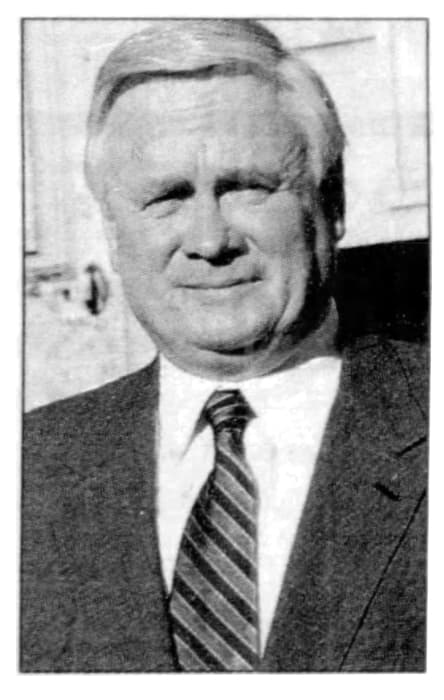
1997 would see first-time candidate Martin Golden beat former State Senator Robert DiCarlo in a 1997 GOP Primary. The race was hot; the Council seat was wide open because Albanese was abandoning the post to run for Mayor. Golden would win, running on a plethora of Party lines, and would go on to become a fixture in local politics for the next twenty years.
But Golden wasn’t a stranger to politics. In fact, his own unofficial clubhouse was dripping with political history, and maybe a bit of intentional symbolism; the Bay Ridge Manor.
The Clubhouse
The Manor itself was originally built as the Democratic clubhouse for Thomas McGee (who originally overthrew the Tammany-aligned Tom Wogan-led local Democratic machine in the mid-30s). It remained a Democratic clubhouse through much of the 20th century.
In fact, it served as Democrat Sal Albanese’s main headquarters for much of the 80’s, with many neighbors knowing it as a place to apply for Senior Citizen discounts, grill a visiting Parks Department official, hear about plans for renovating a high school, or listen to a political speech. It had built-in cachet.
Golden would run the Manor throughout the 80’s, after becoming owner of the building’s catering business in 1983, the same year Albanese became Councilman. In that capacity, Golden was able to observe many of the events Albanese ran, support him, and critically, make connections.
Incorporating Bay Ridge
Eventually Golden would buy the property outright in 1993. In that year, with Conservative Party chairman Mike Long (of Long’s Liquors), he’d create a dizzying array of corporations. There was “476, Inc” for the Bay Ridge Manor, as well as the “Fifth Avenue Board of Trade, Inc.”, which would go on to found the Fifth Avenue BID, and be a clubhouse of sorts for his fellow businessmen and real estate friends along 5th.
Golden would lead the charge to transform old Bay Ridge traditions, such as the Ragamuffin Parade, into Limited Liability Corporations that could raise and hold significant sums of money… and avoid having to report detailed tax returns. The Ragamuffin, for example, would end up becoming an LLC headed by Colleen Golden, Martin’s wife. Fundraising events for these new corporations could be conveniently held at Bay Ridge Manor, either out of synergy or largesse.
Golden, in his capacity as a newly-minted local trade leader, would also pioneer new parades and public entertainments, such as the Bay Ridge St. Patrick’s Day Parade… founding corporations for them, as well. Members of his staff often filled out the directorships of these new corporations.
It was a powerful combination: public good-will backed by behind-the-scenes moneymaking capacity. Golden used it to launch himself into politics a few years later, briefly becoming City Councilman before pursuing his main political rival, Vincent Gentile, into the State Senate.
The maneuver from Council to State Senate was not without precedent: the Manor itself was built as a monument to exactly such a scheme, conducted by the Alderman O’Toole, nearly seventy years earlier.
Councilmember Golden’s Electoral Stats (click to open)
City Council Election, 43rd District | Nov 4th 1997
| Candidate | Party | Votes |
|---|---|---|
| Martin J. Golden | Republican* | 14,959 |
| Joanne Seminara | Democrat** | 12,235 |
**Seminara also ran on the Liberal Party ticket.
City Council Election, 43rd District | Nov 6th 2001
| Candidate | Party | Votes |
|---|---|---|
| Martin J. Golden (Incumbent) | Republican* | 17,211 |
| Joanne Seminara | Democrat** | 11,683 |
**Seminara also ran on the Liberal Party ticket.
Vincent “Vinny” Gentile (2003-2017)
Councilman for the 43rd Councilmanic District. Democrat.
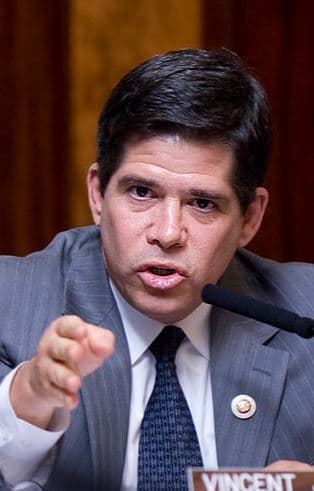
Vincent Gentile and Martin Golden’s careers define each other. Longtime rivals, they ended up playing a game of switcheroo throughout the late 90s and 2000s. When Golden defeated Gentile for his Senate Seat in 2003, Gentile decided to run for Mr. Golden’s abandoned Council seat.
Gentile won his foe’s old seat in a special election that didn’t include familiar party lines such as Democrat or Republican. Instead, Gentile ran under the “Most Qualified Party” line, against other notable local residents such as Rosemarie O’Keefe (No New Taxes Party), Stephen Harrison (Neighborhood First Party), Carlo Scissura Jr. (Community First Party), and Joanne Seminara (United District Party).
Gentile would hold the seat for over a decade, governing as a centrist Democrat. But in 2010, the City Council instituted term limits. Gentile, who by that point had already served three terms, was given two more (the new limit.) He would be forced from office in 2018.
Gentile would hand the baton to his longtime aide and constituent services expert Justin Brannan. But State-Senator Golden, still occupying Gentile’s old senate seat, remained a rival… and he had his own aide in mind for the Council.
Councilmember Gentile’s Electoral Stats (click to open)
City Council Special Election, 43rd District | Feb 25 2003
| Candidate | Party | Votes |
|---|---|---|
| Vincent J. Gentile | Most Qualified | 3,261 |
| Rosemarie C. O’Keefe | No New Taxes | 3,230 |
| Joanne Seminara | United District | 2,750 |
| Stephen A. Harrison | Neighborhood First | 781 |
| Carlo A. Scissura | Community First | 691 |
City Council Election, 43rd District | Nov 4th 2003
| Candidate | Party | Votes |
|---|---|---|
| Vincent J. Gentile (Incumbent) | Democrat* | 7,797 |
| Pat Russo | Republican** | 6,520 |
**Russo also ran on the Conservative Party and Independence Party tickets.
City Council Election, 43rd District | Nov 8th 2005
| Candidate | Party | Votes |
|---|---|---|
| Vincent J. Gentile (Incumbent) | Democrat* | 13,989 |
| Pat Russo | Republican** | 11,313 |
**Russo also ran on the Conservative Party and Independence Party tickets.
City Council Election, 43rd District | Nov 3rd 2009
| Candidate | Party | Votes |
|---|---|---|
| Vincent J. Gentile (Incumbent) | Democrat* | 13,879 |
| Bob Capano | Republican** | 8,615 |
*Capano also ran on the Independence Party and Conservative Party tickets.
City Council Election, 43rd District | Nov 5th 2013
| Candidate | Party | Votes |
|---|---|---|
| Vincent J. Gentile (Incumbent) | Democrat* | 13,365 |
| John F. Quaglione | Republican** | 7,561 |
| Patrick Dwyer | Green | 349 |
*Quaglione also ran on the Independence Party and Conservative Party tickets.
Justin “JB” Brannan (2018-Present)
Councilman for the 43rd Councilmanic District. Democrat.
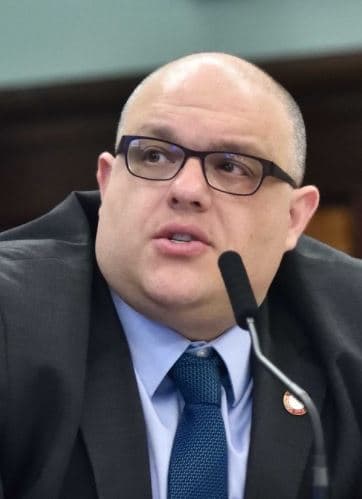
Mr. Brannan, a longtime aide to Mr. Gentile, took office in 2018 after defeating State Senator Marty Golden’s longtime majordomo John Quaglione.
Brannan was often targeted for his seemingly rebellious lifestyle as a member hardcore punk band Most Precious Blood. However, what many overlooked was the fact that the band consisted of activists advocating against substance abuse. They worked to further vegetarianism, veganism and animal rights: so-called “straight-edge” punk. In fact, one of their side gigs was a band called Caninus, which included two female pitbulls as vocalists, and focused on bringing attention animal abuse.
Brannan’s term as Councilman has seen a major increase in accessibility. Brannan was primarily responsible for constituent services under Mr. Gentile (answering phones, responding to in-person office visits, etc), and refused to hand off many of these responsibilities upon becoming a Councilmember. He became the first Bay Ridge official to leverage social media as a way of maintaining direct contact with his constituents. These innovations made him perhaps the most publicly accessible Councilmember in Bay Ridge history, usually handling social media queries himself on Facebook and Twitter.
Councilmember Brannan’s Electoral Stats (click to open)
City Council Election, 43rd District | Nov 7 2017
| Candidate | Party | Votes |
|---|---|---|
| Justin L. Brannan | Democrat* | 12,894 |
| John F. Quaglione | Republican** | 12,100 |
| Angel Medina | Women’s Equality | 281 |
| Bob Capano | Reform | 344 |
**Quaglione also ran on the Conservative Party and Independence Party tickets.
A few notes about this list: This history has been independently researched and assembled using primary source documents and news articles from the era. Third-party sources were checked for accuracy against primary documents in every instance. Summaries for each Councilmember and Alderman are admittedly incomplete and cursory. We decided to focus on key moments and interesting stories about each candidate’s electoral and political background, rather than accomplishments and legislation. The list focuses solely on elections that directly tied to the candidates Councilmanic or Aldermanic terms. We intend to compile a separate list for the State Assembly and Congress. Finally, we definitely took sides in how we framed some events, but only after significant research and consideration. If you notice an error in our history, or have an addition or reminisce you think would be helpful, please contact us.
You forgot John Gangemi’s tenure as a GOP Councilman at large
You forgot Mike Long’s short tenure as a councilman at large, after Vince Riccio was forced to resign due to a conviction
Thanks Howard! We’ll add them in the next update, along with some extended bios for a few Aldermen.